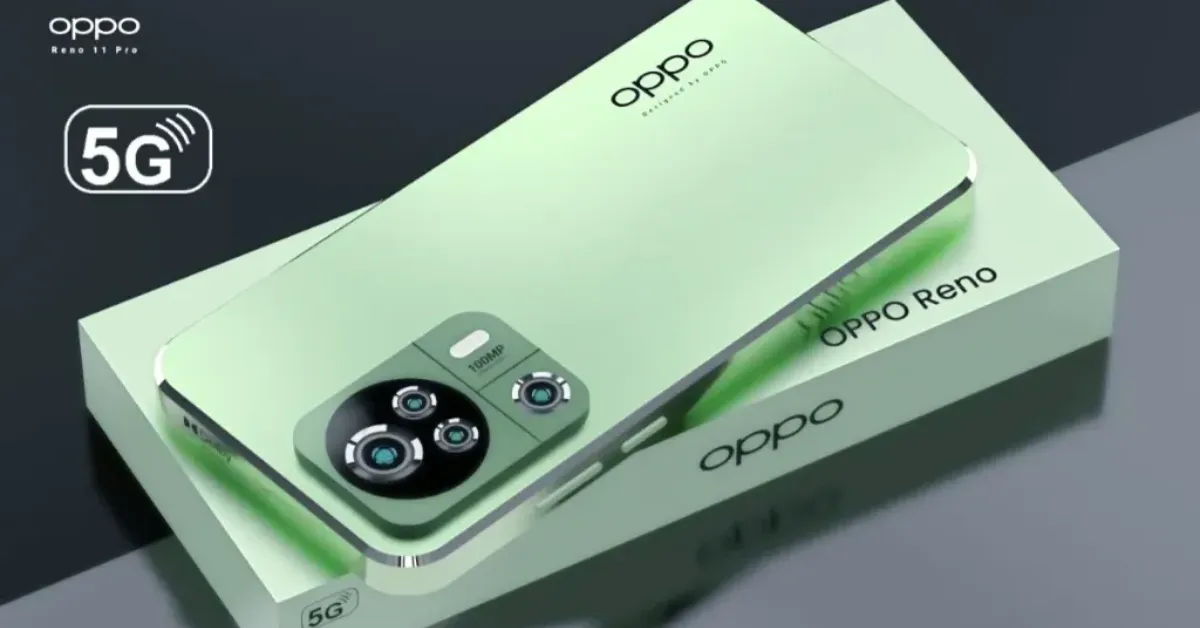Google Pixel 10 marks a significant milestone for the Pixel lineup, bringing a new generation of AI-first hardware, a revamped camera system, and a major leap in on-device intelligence powered by the Tensor G5 chip. Officially announced at the Made by Google 2025 event on August 20, the Pixel 10 series slots in alongside the Pixel 10 Pro and Pro XL, signaling Google’s most ambitious smartphone family yet. Previews and Google’s own materials indicate a refined design philosophy, sustained focus on helpful AI, and long-term software support that aim to make Pixel 10 a more capable everyday companion right from launch.
Key Highlights at a Glance
- Announced at Made by Google on August 20, 2025, as part of the 10th-generation Pixel lineup.
- Powered by the new Tensor G5, built on TSMC’s 3nm process, delivering faster, cooler, and more efficient performance with major on-device AI gains.
- Deeper AI integration across features like Magic Cue, Voice Translate in calls, Call Notes with actions, and Personal Journal, running directly on-device via Gemini Nano.
- Camera upgrades include a more versatile system and G5-powered computational photography improvements, with enhanced ISP, motion deblur, and pro-grade video defaults.
- Google emphasizes seven years of software and security updates for the series, aligning with Pixel’s long-term support strategy.
- Availability and promotions surfaced globally with preview pages and store sign-ups ahead of launch.
Google Pixel 10 Lineup Context and Launch
Google framed the Pixel 10 generation as both refined and more proactive, pointing to design polish, AI enhancements, and camera improvements as pillars of the update. The series was unveiled during the Made by Google 2025 event on August 20 in New York, with availability and pre-order timing communicated via Google’s channels and retailer coverage. Prior to launch, Google teased the phone’s design and rollout schedule, underscoring the significance of this tenth-generation release.
Multiple outlets reported the structure of the lineup mirroring Pixel 9, with a base Pixel 10 joined by Pro and Pro XL variants, and a companion foldable introduced under the Pro branding at the event. This staging indicates Google’s intent to serve different power and size preferences while keeping feature parity tighter than before in several areas—particularly with the Tensor G5 platform and shared AI capabilities.
Design and Build
While Google emphasized refinement over radical reinvention, the Pixel 10 continues the recognizable Pixel aesthetic: clean lines, flat sides, rounded corners, and a centered camera housing with practical tweaks. Pre-launch visuals and rumor roundups suggested the hardware footprint remains familiar to Pixel 9-class devices, with subtle adjustments that prioritize handling and durability without abandoning the brand’s visual identity. Google’s positioning suggests a sharper execution on materials and finishes, coupled with functional design choices that support the upgraded camera system and thermal characteristics of Tensor G5.
Read More: Bigg Boss 19 Contestants List 2025: Full Confirmed Names, Profiles, Premiere Date, Theme, FAQs
Google Pixel 10 Display and Multimedia
Although Google’s official blog post focused more on intelligence and imaging, the Pixel 10 series messaging centers on “best-ever” camera experiences, improved video performance, and quality-of-life features for creators and everyday users. The new ISP in Tensor G5 drives better low-light capture, motion deblur, and 10-bit video defaults at 1080p and 4K30, pointing to a crisp visual pipeline that should benefit both casual recording and more controlled content workflows.
Performance: Tensor G5 and On-Device AI
Tensor G5 is the anchor of Pixel 10’s identity. It’s Google’s first Tensor produced by TSMC, moving away from Samsung fabrication—an architectural and manufacturing shift that generally improves efficiency and thermal behavior in mobile chips. Google highlights:
- Up to 34% faster average CPU performance and a TPU that’s up to 60% more powerful compared to the prior generation, enabling more advanced on-device AI tasks while improving efficiency.
- Gemini Nano runs fully on-device, now 2.6x faster and twice as efficient for tasks like Pixel Screenshots and Recorder, with a token window increase to 32,000 tokens for larger context handling.
- The chip’s new ISP unlocks sophisticated computational photography and advanced zoom features (including Pro Res Zoom up to 100x on supported models), along with enhanced Real Tone and video improvements.
Crucially, many signature capabilities are truly on-device, improving privacy, speed, and reliability—Google explicitly connects this to deep collaboration with Google DeepMind and system-level optimizations within G5.
Software and Long-Term Support
Google Pixel 10 ships with the latest Android and brings an expanded suite of AI features that are ready at launch thanks to Gemini Nano on-device. Google’s long-update policy continues to be a hallmark of Pixel ownership; mainstream coverage in India underscored the seven years of software and security updates for the Google Pixel 10 series, making it a pragmatic long-term purchase for buyers prioritizing longevity. This commitment aligns with Google’s broader Pixel roadmap and encourages users to adopt AI-first workflows without fear of early obsolescence.
Google Pixel 10 AI Features and Everyday Intelligence
Google’s narrative for Google Pixel 10 is “powerful and proactive”—a phone that helps before being asked, while preserving user agency. Enabled by Tensor G5 and Gemini Nano, Pixel 10’s AI suite includes:
- Magic Cue for smarter, context-aware assistance in messaging and writing.
- Voice Translate for live call translation, with natural-sounding voice reproduction and improved latency, running on-device.
- Call Notes with actions that summarize and extract key tasks or follow-ups from conversations.
- Personal Journal for private, on-device journaling assisted by AI, enhancing reflection without cloud dependence.
- Upgrades to trusted features like Scam Detection and natural voice editing in Gboard.
These tools are positioned as immediately useful, private by design, and available without network constraints—a meaningful differentiator as AI becomes table stakes in modern smartphones.
Google Pixel 10 Cameras and Imaging
Cameras have long defined Pixel, and with Pixel 10, Google leans into both hardware and computational gains. The Tensor G5’s new ISP pushes improved low-light video quality, motion deblur, and default 10-bit capture, while the camera app integrates more powerful models to extend zoom range and detail. Google also introduced content authenticity at the camera level: the Pixel 10 Camera app is the first with C2PA Content Credentials built in, creating secure metadata on-device with Tensor G5 and Titan M2 to document an image’s provenance and edits—an important step for trust in the AI era.
Mainstream reports in India singled out significant changes for the base model: a triple-camera system with a dedicated telephoto lens (5x optical), shrinking the gap with Pro models, and making the standard Pixel 10 more versatile for photography enthusiasts. This aligns with Google’s overall message that key experiences are more evenly distributed across the lineup this year.
Google Pixel 10 Battery and Efficiency
Coverage around the Tensor G5 emphasizes efficiency gains, aided by TSMC’s 3nm process and Google’s system-level optimizations. Reporting indicates that Google is targeting “30+ hours” of battery life on Pixel 10 phones, up from “24+ hours” on the Pixel 9 range, thanks to efficiency improvements and slightly larger batteries. Combined with on-device AI that eliminates some network dependencies, daily endurance should improve under AI-heavy use cases.
Connectivity and Charging
Pre-event coverage pointed to broader ecosystem plays and compatibility—reporting suggested new accessories and magnets, plus expanded wireless charging alignment under a “Pixelsnap” brand designed to interoperate with major Android devices. While specifics vary by model and region, Google’s approach signals a maturing hardware ecosystem around Pixel with more convenient charging and accessory attachments. These details complement the core device upgrades and may simplify everyday setups for users who rely on mounts, stands, and docks.
Availability, Colors, and Variants
Google’s store pages and media coverage laid out a global launch rhythm, with sign-up notices ahead of the August 20 reveal and a broad SKU strategy including Pixel 10, Pixel 10 Pro, and Pixel 10 Pro XL. Previews and local reporting highlighted colorways spanning Obsidian and seasonal hues like Indigo, Frost, and Limoncello on base models, with Pro variants in Porcelain, Jade, and Moonstone depending on region. The multi-variant approach ensures size and feature preferences can be met without sacrificing core AI capabilities.
Google Pixel 10 Pricing and Value Considerations
Indian coverage positioned the standard Pixel 10 as a smart-value flagship, spotlighting three reasons: the full-power Tensor G5, a triple-camera system with telephoto, and seven years of updates—all at a lower entry price than Pro models. This aligns with Google’s strategy to broaden access to its signature experiences, making the base Pixel 10 an attractive option for users who prioritize AI features and camera flexibility without needing every pro-tier spec.
Who Should Consider Google Pixel 10?
- Power users seeking on-device AI: Tensor G5’s Gemini Nano enables fast, private AI interactions with large context windows, great for note-taking, summarization, and translation without round trips to the cloud.
- Mobile photographers and creators: Improved ISP, motion deblur, real-time video enhancements, and pro-grade defaults make capturing “right now” content easier and more consistent, even in challenging light.
- Long-term buyers: Seven years of software and security updates bolster total cost of ownership and long-term reliability.
- Users prioritizing trust and authenticity: C2PA Content Credentials in-camera help establish provenance as AI tools proliferate.
Potential Trade-Offs
- Pro-exclusive perks: While the base model gains a triple camera and G5 power, Pro models may still hold advantages in display tech, additional camera tuning, or maximum zoom features like 100x Pro Res Zoom depending on SKU.
- Regional availability and colors: Some finishes and configurations may vary by market, and early availability may be staggered.
Frequently Asked Questions (FAQ)
- When was the Pixel 10 announced?
It was announced on August 20, 2025, during the Made by Google event. - What chip does the Pixel 10 use?
Google’s Tensor G5, manufactured by TSMC on a 3nm process, powering major gains in on-device AI performance and efficiency. - What are the headline AI features?
On-device Gemini Nano enables Magic Cue, Voice Translate in calls, Call Notes with actions, Personal Journal, improved Scam Detection, and more, running faster and more efficiently than previous models. - How has the camera improved?
A new ISP enables better low-light video, motion deblur, default 10-bit video at 1080p and 4K30, enhanced Real Tone, and advanced zoom features, with the camera app supporting C2PA Content Credentials on-device. - Does the base Pixel 10 finally get a telephoto lens?
Coverage in India reports a triple-camera system with a dedicated telephoto lens on the base Pixel 10, bringing 5x optical zoom and narrowing the gap with the Pro models. - How long will the Pixel 10 receive updates?
Seven years of software and security updates were emphasized in mainstream coverage, reinforcing long-term value. - Are there new accessories or charging options?
Pre-event reports pointed to magnet-enabled accessory features and broader wireless charging compatibility under “Pixelsnap” branding, as well as a new wireless charger teased around the event. - What colors are available?
Reports highlighted Obsidian, Indigo, Frost, and Limoncello for Pixel 10, with Pro variants in Porcelain, Jade, and Moonstone, varying by market.
Read More: Arsenal vs Leeds United Today Match: Lineups, Live Stream, Tactics, Score, and Analysis
What Makes Google Pixel 10 Different This Year
Google’s tenth-generation phone leans fully into an AI-first future, with Gemini Nano running locally to make the phone faster, more private, and more capable across everyday tasks—without waiting on the cloud.
Three aspects stand out:
- On-device AI as a default experience
By moving more intelligence to the device—voice translation, journaling, smart compose, call summaries—Pixel 10 redefines responsiveness and privacy for common tasks. - Camera authenticity and trust
The integration of C2PA Content Credentials directly into the camera app is a forward-looking move, offering verified provenance for images and videos at creation. - Long-term ownership philosophy
With seven years of updates highlighted for the lineup, Pixel 10 is designed to age gracefully, supporting users as AI capabilities expand over time.
Final Verdict
Pixel 10 is the most mature expression of Google’s smartphone vision so far: thoughtful hardware, powerful yet efficient silicon, and AI that feels integral rather than experimental. For many buyers—especially those eyeing long-term updates and a versatile camera—the base Pixel 10 will be the sweet spot, bringing formerly “Pro-only” features into a more accessible package. For those wanting the highest ceilings on zoom, display, and camera tuning, the Pro variants still beckon—but the gap has narrowed significantly this year.
As the software roadmap evolves, the AI stack anchored by Tensor G5 and Gemini Nano should only become more capable. That makes the Pixel 10 not just a strong flagship at launch, but a platform designed to grow in usefulness over time.













